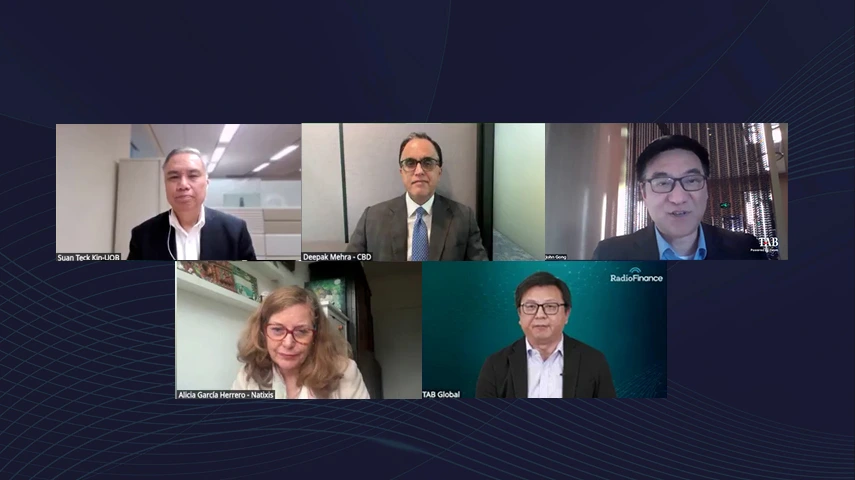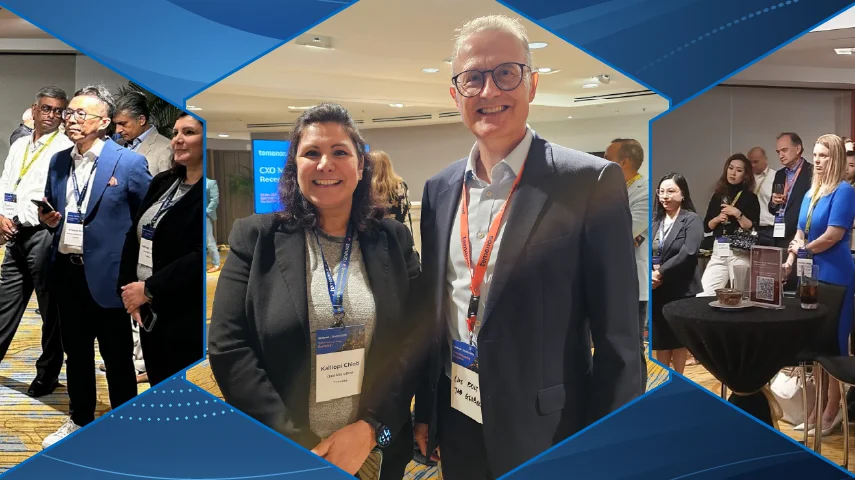Technology practitioners and experts Colin Dinn, chief information technology and digital transformation officer at Vietcombank, Supriyanto Supriyanto, senior vice-president, strategic, architecture and planning at Pegadaian, Andreas Spanner chief architect for Australia and New Zealand at Red Hat, Michele Pelino, principal analyst at Forrester and Brandon Koh, head of technical presales, APJ territories at Intel discussed what success looks like for financial services organisations looking to implement edge computing in their IT environments, encompassing core systems, enterprise networks, IT operations and front-end customer engagement and experience.
In the financial services industry, edge computing could be the game changer that redefines the integration of internet of things (IoT) edge devices, low-data latency and smart analytics to produce real-time insights and outcomes. It promises to reduce operational costs, mitigate system risks, improve network productivity and efficiency, while at the same time transforming the digital capabilities of institutions and their capacity for customer engagement.
Pelino commented that the evolution of network computing to edge computing tracks the arc of a pendulum that has swung between decentralised and centralised architecture and processing.
Today, edge computing aims to optimise local operations while maintaining global- or enterprise-level efficiency through a hybrid deployment of IoT devices and solutions for local workloads, and cloud for enterprise workloads.
However, without a holistic strategy, institutions could end up implementing incompatible or fragmented edge solutions that may not be optimised for workload affinity. Pelino and Spanner warned that the application of edge technology in finance is nascent, where there is no standard definition, best practice or benchmark for successful implementation, and institutions risk “undifferentiated heavy lifting” without benefits or results.
Dinn emphasised that distributed network architecture and processing is not new but agreed that edge computing adds a new level of computing capability in the form of IoT edge devices and solutions as well as advanced analytics enabled by artificial intelligence (AI) and machine learning (ML). He highlighted that a decentralised and open architecture creates a bigger “attack” surface for cybercrime.
Supriyanto shared the benefits of edge computing, increased network productivity, response time and improved customer experience. Pegadaian, the financial services subsidiary of Bank Rakyat Indonesia, implemented edge-enabled software-designed wide area network as part of its network and branch transformation to optimise connectivity and local operations for its 4,000-plus network of conventional and micro branches across Indonesia.
Spanner, responding to Dinn’s concerns over security, stressed the importance of a consistent operating model and appropriate system solution. However, it is the choice of partner with the open system design and implementation experience who can deliver “differentiated” outcomes that matters. He said: “The lowest common denominator is really that consistent operating model from core to edge, to cloud.”
With edge computing, Koh said: “There are multiple types of business insights that can happen.” For example, content that can be distributed through high-definition media interface and content delivery network. Similarly, AI can also be delivered and run in a centralised or decentralised manner. He added: “In some AI use cases, it makes sense for it to be implemented on edge computing.”
Pelino and Koh also warned of the risk of solution fragmentation that may reduce the efficiency and efficacy of edge deployment, and that institutions must address the issue of workload affinity. Koh added that low-data latency is critical to meeting the user experience and customer expectation of the future and will drive the adoption of edge computing, especially in digital transformation of retail and branch banking.
The following are the key discussion areas:

Chief Information Technology and Digital Transformation Officer,
Vietcombank

Senior Vice President, Strategic,
Architecture and Planning, PT. Pegadaian (Persero)

Chief Architect Australia and New Zealand,
Red Hat

Principal Analyst,
Forrester

Head of Technical Presales,
APJ Territories,
Intel

President and
Managing Editor,
The Asian Banker


The Asian Banker RadioFinance aims to enhance understanding of the finance industry globally by bringing together thought leaders, industry experts, practitioners and futurists to examine current, critical issues through a discussion facilitated by visual and web-based platforms. Through the use of interactive technology, participants do not have to take time out from their crowded schedules or leave the comfort of their own desks.

As the global banking industry braces for a challenging 2025, it faces economic headwinds, geopolitical tensions, trade realignments, and the push for sustainability and technological innovation

The AWS Financial Services Symposium Singapore 2024 showcased how AI, data, and cloud technologies are revolutionising financial services. Industry leaders from AWS and HSBC shared insights into advancing innovation, regulatory responsibility…

On the eve of the Singapore Fintech Festival 2024, TAB Global and Temenos hosted an exclusive CXO networking reception at Swissotel, The Stamford. The gathering provided a relaxed setting for executives across the industry to connect and…

The Finance Philippines 2024: Leading Practitioner Roundtable on Technology Modernisation for Digital Banking and Lending Innovation explored the critical role of foundational technologies, financial inclusion, identity verification systems,…

On June 21, The Asian Banker held the 2024 Future of Finance China Summit in Beijing, themed "Challenges and Vision". The year 2024 is expected to be a challenging one globally due to intensified geopolitical tensions and increased trade…

By continuing to browse this website, you agree to our privacy policy.